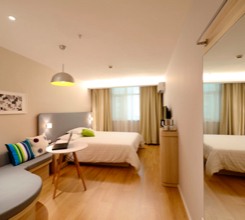Behind the legends of fortified wines

With a million inhabitants, Porto is the second largest city in Portugal after the capital Lisbon. For sports fans, it is a football icon. On the left steep bank of the Douro River, there is something that wine lovers are interested in: wine houses of the most famous brands of Port wines.
About port wine
Tanzania's smallest national park
The vines from which Port wine (Vinho do Porto) is made are grown on the steep slopes surrounding the Douro River, about 150 km east of Porto. The hilly terrain is characterized by very cold winters and hot dry summers. Although the vine has been grown here for about 2,000 years, the history of port wine dates back to the 17th century. The following reputation is connected with it. The two sons of a wealthy British merchant wandered the Douro Valley. Here they met an abbot who was improving his wine with a vineyard. The brothers have found that this process has its advantages: the wine tastes better, lasts longer and does not spoil even during transport by sea. Unlike regular still wine, port has a higher alcohol content, about 20 percent, and a higher residual sugar. The vines are still mostly harvested by hand. After collection, it is pressed immediately, often in the traditional way, ie with the feet. The fermentation of the wine is stopped when the value of 7% alcohol is reached by adding 77% distillate (vinasse) in the ratio of 1 volume of distillate and 4 volumes of wine. For this reason, port has a higher residual sugar. Red portas are usually made from blue grapes of the typical varieties Tinta Roriz, Touriga Nacional, Touriga Franca and Tinto Barroca. White ports originate from the Malvasia, Viosinho and Donzelinho varieties. There are also pink ports. The Institut Vinho do Porto watches over the whole process of port wine production. The amount of production of individual winemakers is thus determined and all necessary parameters of the wine are monitored by measurement. Before bottling, the wines must go to an institute for analysis. However, red port wines predominate. Their basic division is into Ruby and Towny. The Ruby species matures in large barrels with a volume of about 9000 liters and larger for three years. It typically has a dark red color, aroma of raspberries, blackberries, strawberries, so a fruity expression in the bouquet. It is the best-selling species. In the case of the Reserve or Special Reserve label, the aging period on the barrel is about 6 years, it is a non-vintage wine. Tawny matures in much smaller barrels with a volume of typically 900 liters and has a rather yellow-brown, pale garnet or brown-red color with an aromatic expression of dried fruit and oak barrels. The label may indicate the average age of the wines from which the Towny was made, eg 10, 20 and 40 years. If only the trademark is indicated on the wine label, it is usually the so-called „Vintage Character Port“. It's not a vintage wine, it's essentially Ruby, a blend of the highest quality wines from several vintages that has matured in oak barrels for five years. The specialties are Vintage and LBV. The first of them matures in barrels for two years, then it is bottled in bottles in which it matures for at least 10 years. It is possible to meet Port Vintage several decades old. LBV stands for „Late Bottled Vintage“. It's a kind of intermediate stage to the Vintage kind. LBV is bottled only after 4 years of aging on a barrel, but then it is ready for immediate consumption. In both cases, these are vintage wines. However, not every year Vintage or LBV is produced, it depends on the quality of the grapes in the given calendar year. The vintage wine is also „Colheita“, which is identical in style to Towny, but in a vintage version.
The right bank of the Doura
We start our journey through Port wine on the right bank of the Douro River, which has played a significant role in the history of Vinho do Porto. It is just a few dozen meters from the historic center of Porto. The wine trade was once very dependent on the river: all the barrels were transported in boats called „barcos rabelos“ to the left bank of the Doura to Vila Nova de Gaia. From 1887, a railway was built through the river valley, which gradually began to take over the transport of barrels. The last merchant shipping trip took place in 1964.
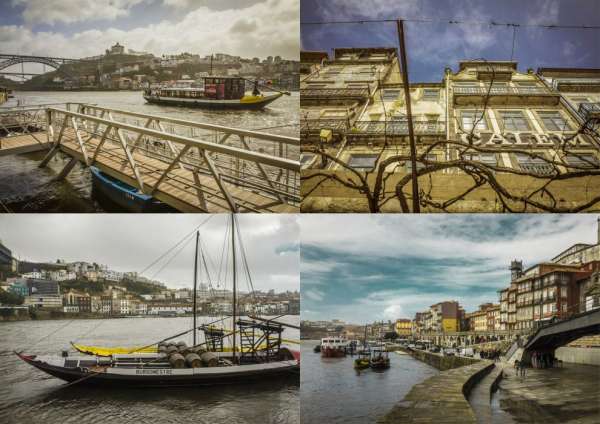
Ponte Dom Luís I.
The other bank, where all the most significant wine houses with their historic cellars are, can be reached via a large steel bridge, the Porta icon, completed in 1886. Its maximum spacing is 391 meters. We cross the river along the lower bridge deck, which is at the level of the waterfront. In addition, the bridge has a second, upper deck, so there is no need to descend and ascend again along the steep bank.
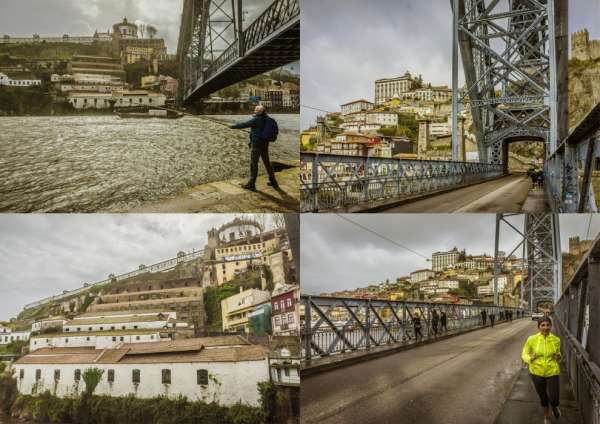
The left bank of the Doura
After crossing the bridge we find ourselves in Vila Nova de Gaia. From the buildings, the iconic names of representatives of well-known wine houses look down on us. Other historic ships with barrels on board are also moored here. At the end of the 18th century, the capacity of ships was 70 to 100 barrels, later, due to improved maneuverability, the capacity was reduced to 70 barrels. Barcos rabelos had a flat bottom and a long rudder. This, together with the raised control platform, allowed precise maneuvering.
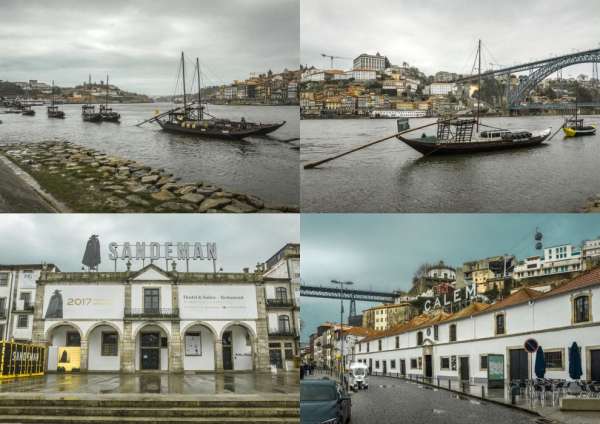
Wine exhibition
Vila Nova de Gaia is well prepared for those interested in port wine. Right on the waterfront, we find several options where you can start tasting and viewing interesting installations of objects and bottles.
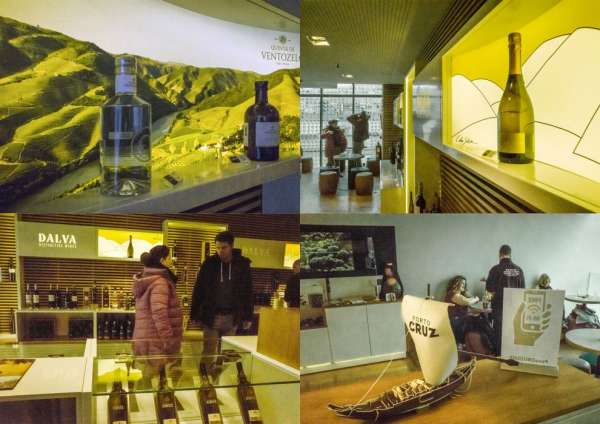
Burmester
This wine house can be found right at the end of the Louis I Bridge. The tour of the cellars lasts about 25 minutes and you can get interesting information about the history of wine production and taste some wine samples. The grapes for Port from Burmester come mainly from the vineyards of Quinta do Arnozelo from the Douro Superior wine region. The varieties represented are Touriga Nacional, Touriga Franca, Tinta Roriz and Tinto Cao plus a small planting of Tinta Barroca Tinta Amarela.

Cálem
This wine house belongs to the Sogevinus SGPS SA group. We find a really large and representative shop with port wines, where practically the entire production of the winery is located.

Cálem
The history of viticulture began in 1859. Wine cellars are among the most interesting and attractive in Porto. Guided tours are possible in several world languages.
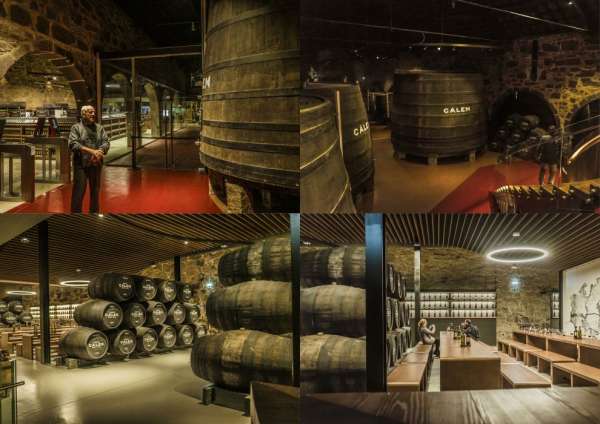
Cálem
At the end of the tour, the entrance tasting includes two wine samples, usually Ruby and one of the white Port wines. But be careful not to break anything !!!

Quinta de Santa Eufemia
You don't have to go too far in Vila Nova de Gaia. The wine houses are almost next to each other. True, sometimes it's just a little uphill. We are in another winery. Tour, tasting and eventual purchase. You can also sit and taste in a barrel.
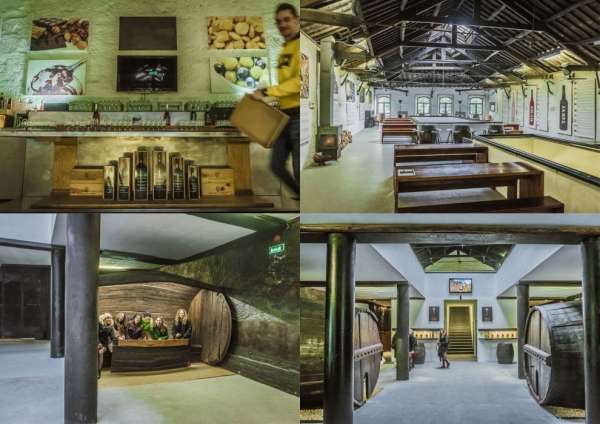
Taylors
The path rising steeply uphill leads us to the legend of port wine, the British wine house Taylors. He is a giant in the production of long-standing wines. The tour of the cellars lasts about one hour and is of course ended with a tasting. There is also a really huge barrel with a volume of 100,000 liters in the cellar. In which is precious LBV (Late Bottled Vintage).

Taylors
The freely accessible part with the restaurant also has a historical exhibition, in which we get acquainted with the past of Port wine production. Among other things, we learn that „Pisar a pé“ means „to step on your feet“ and it is the most gentle method of pressing grapes. It's a long hour of rhythmic and strenuous pedaling. Historic bottles, tools, clothes, after all, the first delivery of Port wine ever was recorded in 1678…

Taylors
The wines of this winery are made with a blend of grapes from its own vineyards Vargellas, Terra Feita and Junco. These three „quintas“ are each located in a different location in the Douro region. There are also relatively older Ports to buy, eg 40 years old.
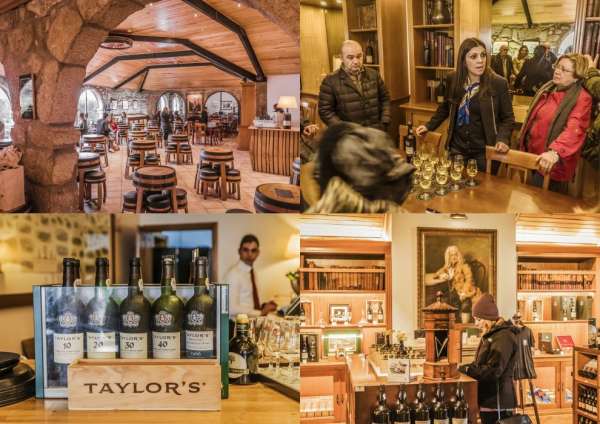
Offley
Another wine house with beautiful cellars, barrels and the possibility of tasting. It is just a 5-minute walk downhill from Taylors. We taste excellent three samples with a pleasant and interesting explanation.
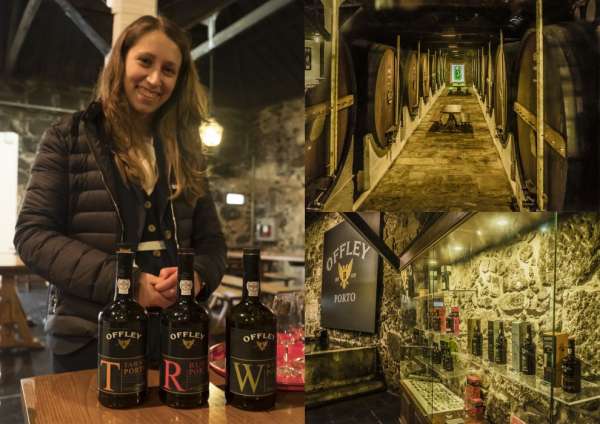
Ferreira
On the way back to the river we come across the open door of another winery. And almost like through a copier, again expositions, barrels, the possibility of tasting and shopping. By the way, the experience of other days shows that buying wine can be more advantageous in the city (there are enough wine shops in Porto), even at the airport the prices are usually not higher than in the „show rooms“ of wineries.
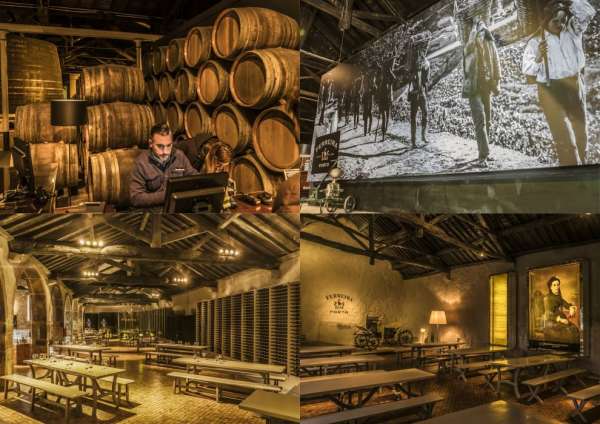
Another winery
Sogevinus brings together several wine houses. These include Kopke, Cálem, Barros, Gilberts and Burmester. There is a production of all in the shop, you can taste about 30 different samples. Ramos Pinto has its premises right on the banks of the Doura. The visit to the cellars with barrels, in which port wines are matured, takes about 40 minutes and ends with two samples with chocolate. Would you like to buy a port for the price of 5000 EUR? No problem.
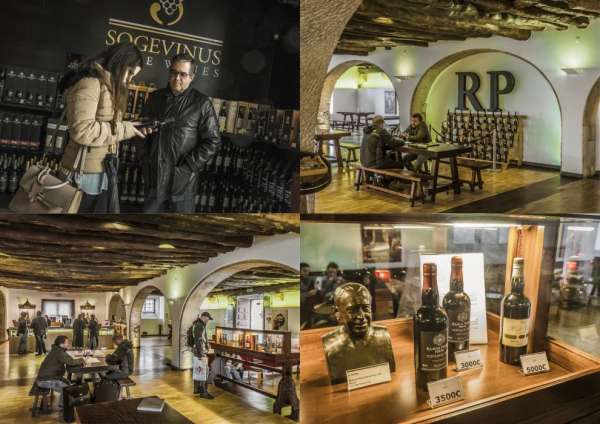
Vila Nova de Gaia
Almost all Port wine companies have their historic cellars called „lodges“ on the left bank of the Douro River in Vila Nova de Gaia (opposite the historic center of Porto). There is not a great distance between the individual wine houses, but rather there is a larger elevation. But it has its advantages. The streets and houses are interesting, upstairs is a nice view of historic Porto and after all, a little movement between the tastings will not hurt.

Vila Nova de Gaia
You could definitely visit other wine houses, but preferably the next day, or another visit to Porto. The list of producers is much more extensive and there is something to look at and what to taste. Everything has its dynamics, and so some old houses give way to new construction of buildings, in which there will be spaces for port wines and visitors, lovers of this delicious drink.
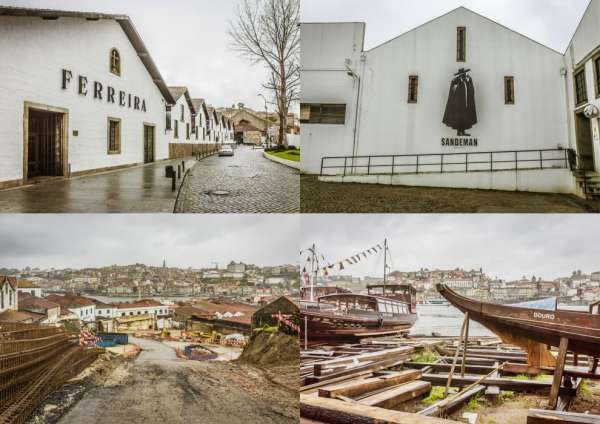
Port Wine Institute
We end our tour back on the right bank of the Doura in historic Porto. The Instituto dos Vinhos do Douro e do Porto is located here. Anyone who wants to label their aged wine barrels with the term port must deliver samples that are carefully tested and certified. Laboratories are not normally open to the public, but if you are lucky… There is a nice exposition in the institute. The Douro vineyard region, from which the grapes for the production of Port wines come, begins about 100 km upstream of the city of Porto and continues for another 100 km to the border with Spain. It consists of three sub-regions: Baixo Corgo (Lower Douro), Cima Corgo (Upper, but in fact Middle Douro) and Douro Superior. After the tour, we end today's demanding day in a different way than by tasting. Cheers and fame Vinho do Porto.
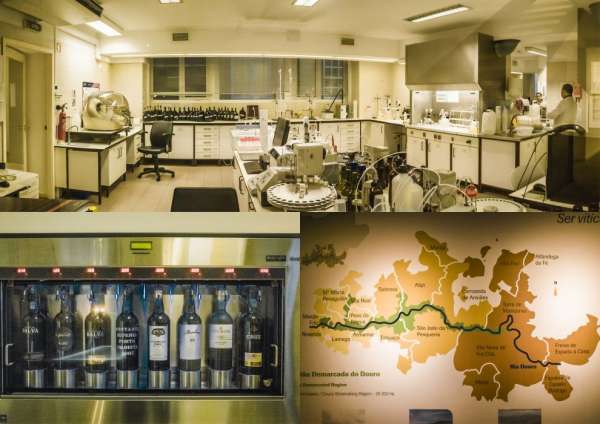
Giga List: The most beautiful travel for wine
Do you love traveling to beautiful places and at the same time do you like good wine a lot? We bring you great tips on where to… continue reading




